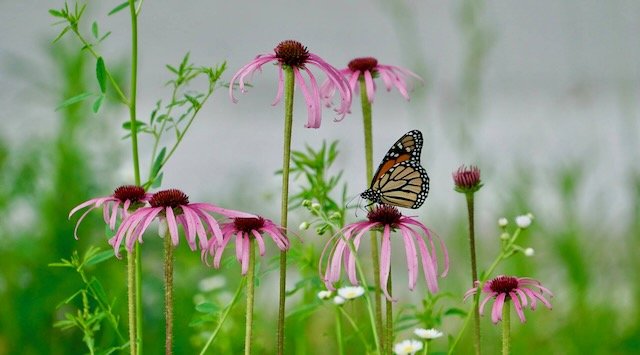On Saturday April 1st, Chert Glades Chapter members helped staff at Prairie State Park by pulling garlic mustard before it could go to seed. Garlic mustard is an invasive biennial species from Europe. This means it flowers after its second year of growth. All the mustard we pulled could have produced hundreds of seedlings next year!
first year seedlings
After initial discovery in the park's campground, the number of garlic mustard plants has steadily decreased by hand-pulling every year. We were told the first-year volunteers pulled a pile of mustard the size of a car, while we only filled a few bags. We did contend with a few patches of tiny seedlings from plants missed during last year’s effort. Hopefully next year there will be even fewer patches!
Invasive species present an ongoing challenge to all parks, prairies, and natural areas. I think this is a good example of how consistent, well-timed removal can eventually control plants that could become a problem very quickly.
a second year plant begins to form buds











